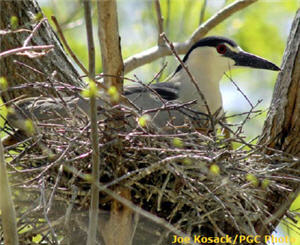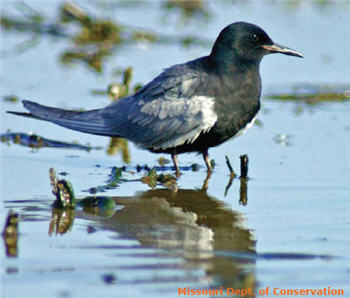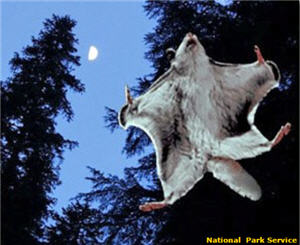State
July 24, 2022
Several Native Species Of Pennsylvania Are Facing Extinction
By Thomas Kwan
Native species living that have existed in Pennsylvania for thousands of years are either endangered or facing extinction. The Pennsylvania State Game Commission (PGC) has released a report on species that are at high risk.
The discussion surrounding endangered species is a tough one. Anytime a species is threatened by either deforestation, human development, environmental changes, or pollution, it becomes a serious matter. According to waterlandlife.org, a Pennsylvania organization that provides awareness and fights for the conservation of indigenous species and environmental health, 25,000 native species of Pennsylvania face many challenges.
Just in the past century, diseases like chestnut blight and Dutch elm disease decimated forests, with new ones propagating throughout the state. Native plants and animals have been dominated by invasive species, particularly those that depend on habitats where competition is scarce, according to waterlandlife.org.
Here is a list of threatened species of Pennsylvania provided by the PGC:
Black-crowned Night-Heron

Photo by Joe Kosack/Pennsylvania Game Commission
Status | Endangered
In Pennsylvania, the black-crowned night-heron is listed as state endangered and protected under the Game and Wildlife Code. All migratory birds are protected under the federal Migratory Bird Treaty Act of 1918. The reason for this species’ endangerment is human activity and the natural destruction of habitat.
Location | Susquehanna/Delaware Rivers
The black-crowned night-heron (Nycticorax nycticorax) was once a common nesting heron in Pennsylvania. It was the most common nesting heron behind the green heron, mostly residing along the Susquehanna and Delaware Rivers. In recent years they have been on the decline, especially in the northern and western counties such as Luzerne and Crawford, where they are completely extinct.
Appearance
The night heron is very stocky and short-necked and considered medium-sized for a nesting heron, marginally bigger than a crow (1-1.4lbs), but half the size of the great blue heron (4.6 – 5.5lbs). When grown into adults, they are marked with a black cap and upper back, gray wings, bottom and tail, and a white or light-gray chest. When they are young, they have streaky brown feathers speckled with large white spots on the wing area. Locally known as a “squawk” due to the sound it makes.
Behaviors
Night-herons are social, nesting and colonizing birds. These birds forage together mostly during the night, dawn, or dusk hours. They nest with very simple stick nests in trees, near their hunting grounds by shallow waters. When humans or predators don’t interfere and disturb these nesting areas, these colonies can last for decades. Even if they don’t use their nest every year, they may return to older nests after a while has passed. Night-herons usually forage for small creatures such as small fish, crustaceans like crayfish, insect larvae, leeches, mussels, mice, small birds, reptiles and amphibians, and even various plant materials and carrion. When at a high level on the food chain, they prosper, but recently they have declined.
Black Tern

Photo provided by Missouri Dept. of Conservation
Status | Endangered
Protected under the Pennsylvania Game and Wildlife code, the Black Tern is considered endangered. While nationally, the bird isn’t endangered, the U. S. Fish and Wildlife Service migratory birds are of conservation concern in the Northeast. As with the night-heron, this species is protected under the federal Migratory Bird Treaty Act of 1918.
Location | Southeastern PA
Black terns (Chlidonias niger) numbers have declined both in nesting and migration numbers annually. These birds nested in Crawford County and, recently, Presque Isle State Park in Erie County. However, only one black tern nest was found during the Pennsylvania Breeding Bird Atlas, which ran from 2004-2008, a decline from the 1st Pennsylvania Breeding Bird Atlas. During the 1st atlas, 11 records were reported, along with four confirmed nesting areas. These atlas studies were restricted to Erie and Crawford counties. In 1985, the black tern was listed as a threatened species in Pennsylvania and designated endangered in 1990. The decline of this species has been most common in southeastern Pennsylvania.
Appearance | Defining Characteristics
Black Terns are slender in appearance, with long pointed wings with light underlines. Usually associated with coastal environments, the black tern also makes appearances at inland marshes during the breeding season. All black in appearance and roughly the size of a blue jay, the black tern is very easy to spot statewide. During the fall breed and molting, adults have black and white feathers. All having both short tails and small bills for a tern. During the flight, they look very light, floaty, and buoyant.
Behaviors
These black terns will nest across the northern United States and southern Canada in spring, summer and fall, and during winter, they nest in South America. Usually, this species can be seen regularly migrating through Pennsylvania, making their appearance in April and May and again in August. The nonbreeding can be found here in the summer, though only in Pennsylvania’s northwest.
Northern Flying Squirrel

Photo provided by National Park Service
In Pennsylvania, the northern flying squirrel is endangered, listed as a priority species in the state’s Wildlife Action Plan, and protected under the Game and Wildlife Code. It is secure nationally.
Status | Endangered
The northern flying squirrel is rare, only residing in northern conifer forests, while the smaller southern flying squirrel is more common. The northern flying squirrel (Glaucomys sabrinus macrotis) is picky about where it chooses to live, although it was very commonly found in Pennsylvania’s northern tier. There was an extensive study in Pennsylvania that ran from 2003-2007, with only 33 sites being found.
Location | Poconos
The northern flying squirrel can be exclusively found in the Poconos region, with Warren County and Potter County being an exception, with only one site found in each.
Appearance | Defining Characteristics
Northern flying squirrels have skin flaps, also known as patagia, extending between their wrists and ankles. With an average size of 8-11 inches, large eyes for seeing during the nighttime, and tan or brown fur on its back. They have a flattened tail from top to bottom that they use to steer while gliding from each tree. If they are white at the tip but lead ored, they are a northern flying squirrel and not a southern one. Flying squirrels travel predominately by flying, averaging a distance of about 65 feet each time they glide. With repeated short jumps, they can reach up to 8mph, with large eyes that help them see during their nocturnal activities. With an overall body length of eight to 11 inches, compared to eight to 10 inches for its slightly smaller cousin.
Behaviors
This squirrel is the exception to the rule because compared to all other squirrels, food-hoarding is not a behavior they have been documented doing. They are most active during the evening hours, adapted for the nighttime with their large eyes, though the northern flying squirrel can still sometimes be observed during the day. While active year-round, they forage mostly in the treetops during the winter months.
Unlike other species of tree squirrels, food-hoarding behavior has not been documented in northern flying squirrels. Most active during evening hours, the northern flying squirrel may emerge briefly during the day. They are found year-round, though they are seen foraging mainly in the treetops during winter. When the weather is severely cold, they might be seen clustering together in the tree cavities, which provide the best nesting for them. Outside nests are composed on the sides of trees, built using bark, twigs, and roots. Every nest in Pennsylvania has a lining of shredded strips of bark, moss, or lichens.








